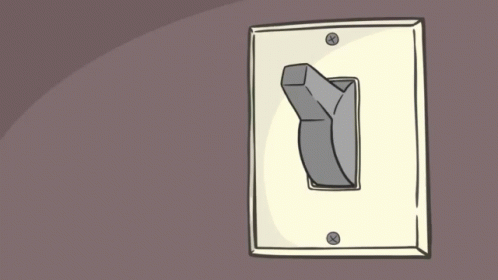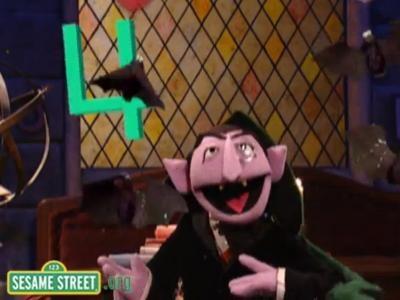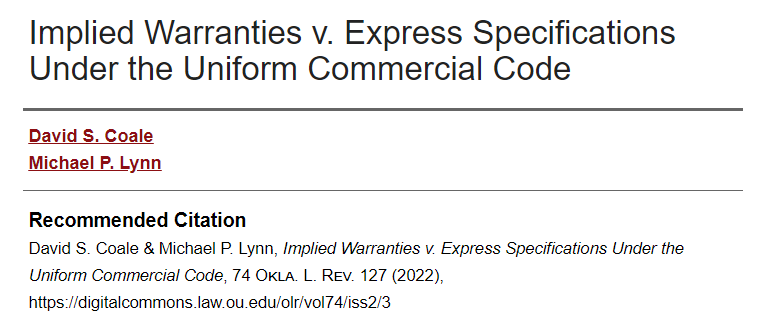In a restricted appeal: “[T]he face of the record shows that appellee filed suit against a Texas corporation named either Joe Prado DBA J.P. Enterprises or Joe Prado ‘JP Enterprises.’ The return of service shows that Joe Prado was served but does not indicate his capacity to receive service on behalf of the purported corporation. Moreover, no other portion of the record indicates Joe Prado’s authority to receive service on behalf of the corporation. We conclude the face of the record fails to show strict compliance with the rules governing return of service; thus, the trial court lacked jurisdiction to render a default judgment against JP Enterprises.” Prado v. Nichols, No. 05-20-01092-CV (Feb. 25, 2022) (mem. op.) (citation omitted, emphasis added).
Monthly Archives: February 2022
 An 11-1 en banc opinion concluded that ERCOT lacked sovereign immunity against fraud claims by a power producer. The opinion noted, inter alia, that this conclusion was consistent with ERCOT not receiving tax revenue, with the structure of the PUC’s regulations about ERCOT liability, and with the law about derivative immunity for “self-regulated organizations.” The Court also rejected ERCOT’s alternative argument that the plaintiff’s claims fell within the PUC’s exclusive jurisdiction.
An 11-1 en banc opinion concluded that ERCOT lacked sovereign immunity against fraud claims by a power producer. The opinion noted, inter alia, that this conclusion was consistent with ERCOT not receiving tax revenue, with the structure of the PUC’s regulations about ERCOT liability, and with the law about derivative immunity for “self-regulated organizations.” The Court also rejected ERCOT’s alternative argument that the plaintiff’s claims fell within the PUC’s exclusive jurisdiction.
A dissent “would conclude that the original panel opinion was not clearly erroneous, the majority’s decision undermines the constitutional-avoidance doctrine, and the PUC has exclusive jurisdiction over Panda’s complaints …”
The Texas Lawbook has further detail. (By way of general background, Erwin Chemerinsky’s 2001 article “Against Sovereign Immunity” remains a classic on that side of the issue.)
The would-be appellant in Cosentino v. Frost Bank tried to appeal a ruling about arbitrability by using the Crowson precedent about what “finality” means in longrunning probate proceedings. The Fifth Court did not accept the argument, reasoning: “As reflected in the parties’ live pleadings, the ancillary proceeding was brought as a declaratory judgment action concerning the validity and enforceability of the PMA [premarital agreement]. The order compelling arbitration determined a preliminary issue within that cause of action—that the PMA was properly executed such that an agreement to arbitrate existed and arbitration of those issues could be compelled—not a cause of action in itself that could be asserted independently as its own lawsuit.” No. 05-21-00829-CV (Feb. 16, 2022) (mem. op.).
In mandamus practice, there is an important exception to the “four-month rule” and other laches-related doctrines, which is that “the doctrine of laches does not apply to a void order ….” In re Reiss, No. 05-21-00600 (Feb. 18, 2022) (mem. op.).
 In case the point wasn’t clear from the Fifth Court’s recent opinion in In re Tekin & Assocs., No. 05-21-00219-CV (Feb. 9, 2022) (mem. op.), the Court restated it in In re Perez-Merino: “Under prior holdings of this court and others, an unexplained delay of four months or more can constitute laches and result in denial of mandamus relief.” No. 05-22-00082-CV (Feb. 14, 2022) (mem. op.).
In case the point wasn’t clear from the Fifth Court’s recent opinion in In re Tekin & Assocs., No. 05-21-00219-CV (Feb. 9, 2022) (mem. op.), the Court restated it in In re Perez-Merino: “Under prior holdings of this court and others, an unexplained delay of four months or more can constitute laches and result in denial of mandamus relief.” No. 05-22-00082-CV (Feb. 14, 2022) (mem. op.).
 “Under prior holdings of this court and others, an unexplained delay of four months or more can constitute laches and result in denial of mandamus relief. Here, relator’s April 6, 2021 petition for mandamus was filed seven months and six days after the trial court’s August 31, 2020 order denying the [Rule 91a] motion to dismiss. We conclude that relator’s unexplained delay bars his right to mandamus relief.” In re Tekin & Assocs., No. 05-21-00219-CV (Feb. 9, 2022) (mem. op.).
“Under prior holdings of this court and others, an unexplained delay of four months or more can constitute laches and result in denial of mandamus relief. Here, relator’s April 6, 2021 petition for mandamus was filed seven months and six days after the trial court’s August 31, 2020 order denying the [Rule 91a] motion to dismiss. We conclude that relator’s unexplained delay bars his right to mandamus relief.” In re Tekin & Assocs., No. 05-21-00219-CV (Feb. 9, 2022) (mem. op.).
“’Texas courts have long held that an appealing party may not complain of errors that do not injuriously affect it or that merely affect the rights of others.’ An appellant is not harmed when sanctions are imposed solely against the appellant’s attorney and does not have standing to challenge an order imposing sanctions solely upon his attorney.” On Deck Capital, Inc. v. CWO Designer Landscapes, No. 05-20-00471-CV (Feb. 10, 2022) (mem. op.).
 The threshold question in Ruff v. Ruff was the timeliness of a TCPA motion to dismiss:
The threshold question in Ruff v. Ruff was the timeliness of a TCPA motion to dismiss:
“Mike argues that Suzann’s earlier petitions sought relief based on a suit to quiet title while in the seventh amended petition, ‘[s]he abandoned the quiet title claim and now seeks declaratory relief interpreting the [probate court judgment]. The seventh petition is a new legal action seeking new declaratory relief.'”
After examining a redlined comparison of the relevant pleadings, the Fifth Court found the motion untimely, concluding that “[t]his is essentially the same claim re-alleged repeatedly over two years in the subsequent amendments to the petition,” and that as a result:
“Mike has not identified on appeal any allegations in the seventh amended petition that added a new party, alleged new essential facts to support previously asserted claims, or asserted new legal claims or theories involving different elements than the claims or theories previously asserted.”
No. 05-21-00157-CV (mem. op.) applying Montelongo v. Abrea, 622 S.W.3d 290 (Tex. 2021)).
The defendant in a medical-malpractice cases sought the production of electronic information about the dates when certain photographs of the plaintiff had been taken. The Fifth Court granted mandamus relief to the plaintiff:
“Methodist did not meet the burden of going forward with evidence … Mere skepticism or bare allegations that the responding party has failed to comply with its discovery duties are not sufficient to warrant an order requiring direct access to an opposing party’s electronic device. While the mandamus record suggests Methodist may have been concerned about multiple creation dates, Methodist failed to make an evidentiary showing that the electronic files Cooley produced lacked metadata. Accordingly, Methodist failed to make the good-cause showing necessary to justify the trial court’s order.”
In re Cooley, No. 05-21-00445 (Feb. 2, 2022) (mem. op.) (citations omitted; applying, inter alia, In re Weekley Homes, 295 S.W.3d 309 (Tex. 2009)).
“In a legal sufficiency analysis, we cannot ignore conflicts in the evidence, even where the conflict is within a party’s own exhibits. Here, there is a conflict between Exhibit 88 and Exhibit 7, the draw receipts. During closing argument, appellants argued: ‘Every time money was drawn [Bresnahan] got Mr. Kidwell to sign another little receipt-type note. So if you look at Exhibit 7, I think there’s 43 of them. So ever[y] draw he got him to sign.’ The problem is that there are forty-seven such draws listed in Exhibit 88 but only thirty eight draw receipts in Exhibit 7. The missing draw receipts, including interest and fees, and the “other deficient notes” together accounted for $569,344 on Exhibit 88.” Haddington Fund, LP v. Kidwell, No. 05-19-01202 (Jan. 12, 2022) (mem. op.) (citations omitted). h
 Mike Lynn and I have an article in the latest Oklahoma Law Review about a fiendishly tricky issue with some “battles of the forms” under the Uniform Commercial Code. A few years back, Mike had a hard-fought trial about this issue in the context of the roof insulation for a big warehouse near D/FW Airport. I hope you enjoy it – and can use it someday in your next UCC case – https://digitalcommons.law.ou.edu/olr/vol74/iss2/3
Mike Lynn and I have an article in the latest Oklahoma Law Review about a fiendishly tricky issue with some “battles of the forms” under the Uniform Commercial Code. A few years back, Mike had a hard-fought trial about this issue in the context of the roof insulation for a big warehouse near D/FW Airport. I hope you enjoy it – and can use it someday in your next UCC case – https://digitalcommons.law.ou.edu/olr/vol74/iss2/3
The judgment-finality issue in Paxton v. Simmons involved a conflict between the Lehmann finality language and handwritten edits to a form of judgment. Held:
“To the extent Ms. Simmons contends the judgment’s statement that ‘[t]his final judgment disposes of all claims and all parties, and is appealable” automatically makes the judgment final, we disagree. The Lehmann dictum she cites does not purport to address a circumstance where, as here, the judgment’s substance directly conflicts with that statement. Our supreme court has instructed that ‘[c]lear and unequivocal language that reflects an intent to dispose of the entire case is given effect, but when there is doubt about finality, the record resolves the issue.’ Here, as Ms. Simmons asserts in her appellate reply brief, the trial court ‘must make further determinations before the issues are finally disposed of.’ On this record, we conclude the December 20, 2019 judgment is not final and appealable.”
No. 05-20-00058-CV (Jan. 21, 2022) (emphasis added).